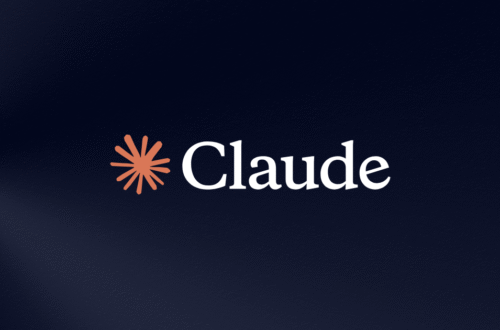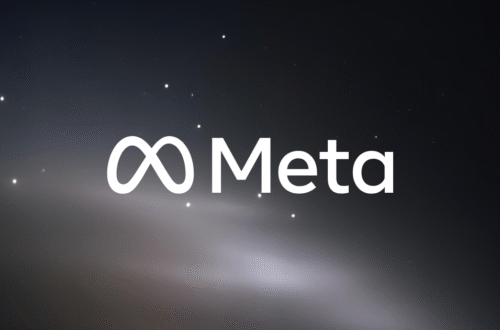Just when you thought the AI arms race might take a summer vacation, Anthropic decided to crash the party. OpenAI’s GPT-4o had its moment in the sun, dazzling everyone with its real-time conversational skills that felt ripped from the movie Her. It seemed like the undisputed champ. Then, on June 20, 2024, Anthropic quietly dropped Claude 3.5 Sonnet, and the entire AI landscape tilted on its axis. The big question on everyone’s mind: is this new model a true GPT-4o killer, or just another pretender to the throne?
So, What Exactly Is Claude 3.5 Sonnet?
First off, let’s get the branding straight, cause it’s a bit confusing. Claude 3.5 Sonnet isn’t a replacement for their top-tier model, Claude 3 Opus. It’s the first release in their next-generation Claude 3.5 family, and it’s positioned as their new mid-tier, flagship model, replacing the older Claude 3 Sonnet. Think of it as the smart, scrappy, overachieving middle child. Anthropic claims it delivers top-tier intelligence at double the speed of Opus, but for a fraction of the cost. It’s a bold claim, but as we’ll see, they brought the receipts.
It’s available for free on Claude.ai and in the Claude iOS app, with higher rate limits for Pro & Team subscribers. Crucially, it’s also live in the Anthropic API, Google Cloud’s Vertex AI, and Amazon Bedrock, making it instantly accessible for developers to start building with. No waiting list, no “coming soon” nonsense. It’s here.
The Benchmark Beatdown: By the Numbers
Okay, let’s get to the juicy part. AI companies love to throw around benchmarks, which can sometimes feel like abstract stats. But in this case, the numbers tell a pretty dramatic story. Claude 3.5 Sonnet isn’t just catching up to GPT-4o; it’s beating it in several key areas, particularly the ones that matter for serious work.
Here’s a quick rundown of how Sonnet 3.5 stacks up against GPT-4o & its own bigger brother, Opus, on industry-standard evaluations:
- Graduate-Level Reasoning (GPQA): Sonnet 3.5 scores 59.4%, blowing past GPT-4o’s 53.9% and even squeaking by Opus’s 57.2%. For complex, multi-step problems, Sonnet is the new brainiac.
- Coding (HumanEval): This is a huge one. Sonnet 3.5 hits a staggering 92.0% on this code generation test, decisively beating GPT-4o’s 90.2%. For any dev-focused application, this is a massive win.
- General Knowledge (MMLU): GPT-4o holds a tiny lead here with 88.7% to Sonnet 3.5’s 88.3%. It’s basically a statistical tie, meaning Sonnet is operating at the same level of general knowledge as OpenAI’s best.
- Vision (AI2D & MathVista): When it comes to understanding charts, graphs, and complex diagrams, Sonnet 3.5 is the clear winner. It sets new state-of-the-art benchmarks in visual reasoning, making it incredibly powerful for data analysis & interpreting visual info.
The takeaway is brutal. Anthropic’s new mid-range model is outperforming OpenAI’s flagship on graduate-level reasoning & coding. Let that sink in.
Speed & Cost: The Pragmatic Knockout Punch
Benchmarks are cool, but for businesses & developers, performance & price are king. This is where Sonnet 3.5 really goes for the jugular. It operates at twice the speed of Claude 3 Opus. For applications requiring near-instant responses, like customer service bots or live code completion, that speed is a game-changer.
Then there’s the price. Let’s compare the API costs head-to-head:
- Claude 3.5 Sonnet: $3 per million input tokens, $15 per million output tokens.
- GPT-4o: $5 per million input tokens, $15 per million output tokens.
They’re tied on output cost, but Sonnet 3.5 is 40% cheaper on input. Since most AI interactions involve sending large amounts of context (the input), this is a significant cost saving at scale. Cheaper, faster, and smarter on key tasks. It’s an almost irresistible combination for anyone building AI-powered products. You can check out the full pricing details on the Anthropic & OpenAI pricing pages.
“Artifacts”: A Glimpse into the Future of Work
Anthropic didn’t just drop a better model; they introduced a killer new feature on the Claude.ai web interface called Artifacts. This is a brilliant move that elevates Claude from a simple chatbot to an interactive workspace.
So what is it? When you ask Claude to generate content like code snippets, text documents, or website designs, that content now appears in a dedicated window next to your conversation. It’s a live, editable workspace.
A Real-World Example
Imagine you’re a developer. You ask Sonnet 3.5, “Create a simple React component for a user profile card with a profile pic, name, and a follow button.” Instead of just dumping a block of code in the chat, Claude will:
- Generate the code.
- Open an Artifacts window on the side.
- Render the actual user profile card in that window so you can see what it looks like.
You can then ask for changes- “make the button green,” “add a user bio”- and watch the Artifact update in real-time. This creates a tight feedback loop for creative & development work that is miles ahead of the old copy-paste-and-run workflow. It’s a huge step toward making AI a true collaborative partner, not just a glorified search engine.
But Wait, GPT-4o Isn’t Dead Yet
Let’s not get carried away and start writing obituaries for OpenAI. GPT-4o still has some serious advantages.
The biggest one is its native, “omnimodal” capability. The live voice & video interactions showcased in the “Hello, GPT-4o” demo are still unmatched. Claude can process audio & images, but it can’t hold a real-time, emotionally nuanced spoken conversation or watch your screen and react to it like a human can. That “wow” factor is still firmly in OpenAI’s camp and points to a future of more ambient, personal AI assistants.
Furthermore, OpenAI has a massive ecosystem advantage. ChatGPT is a household name, and its API is integrated into countless products. Developers are familiar with it, and the community support is enormous. Anthropic is catching up, but OpenAI had a huge head start.
The Verdict: A Specialized Assassin, Not a Total Killer
So, is Claude 3.5 Sonnet a GPT-4o killer? The answer is yes, but with a crucial asterisk.
It’s not a “killer” in the sense that it makes GPT-4o irrelevant. Nope. If you want a flashy, all-in-one AI that can talk to you, see your world, & do a bit of everything, GPT-4o is still your bot. It owns the consumer-facing, multimodal space for now.
But Claude 3.5 Sonnet is what I’d call a pragmatic killer. It’s a specialized assassin targeting the professional & enterprise market. For developers, data analysts, researchers, & writers who demand the highest quality reasoning, coding, & analysis at the best possible speed & price, Sonnet 3.5 is the new champion. It kills GPT-4o on the metrics that matter for getting serious work done.
Best Practices & Final Thoughts
The ground is shifting fast. If you’re building with AI, you need to be testing Sonnet 3.5 right now. The performance & cost benefits could be immediate. When using these tools, remember the cardinal rule: trust, but verify. Even the smartest models can hallucinate. Fact-check critical info.
It’s also worth noting Anthropic’s continued focus on AI safety, guided by its Constitutional AI framework. While OpenAI is focused on blockbuster features, Anthropic is trying to build a reputation for responsible, predictable behavior, which could be a key differentiator for risk-averse enterprise customers.
Ultimately, this isn’t a zero-sum game. The fierce competition between Anthropic & OpenAI is fantastic news for all of us. It’s pushing the technology forward at a breakneck pace, driving down costs, & forcing both companies to innovate. For now, the crown is split. OpenAI has the showman, but Anthropic just unleashed the workhorse. Your move, Sam Altman.


